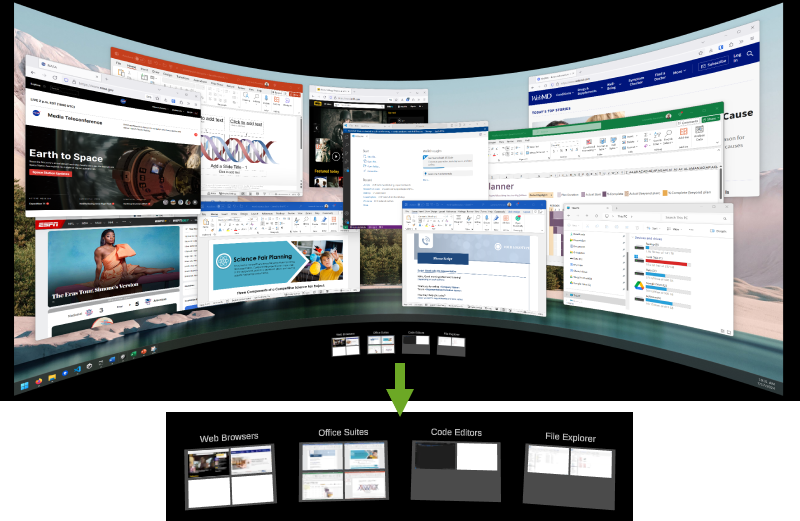Spatial Bar: Exploring Window Switching Techniques for Large Virtual Displays
Abstract
Virtual displays provided through head-worn displays (HWDs) offer users large screen space for productivity, but managing this space effectively presents challenges. Existing research shows that while increased screen space improves performance, it can also introduce significant window management overhead. This paper explores how to enhance window-switching strategies for virtual displays by leveraging eye tracking provided by HWDs and underutilized spaces around the main display area. We investigate the efficiency and usability of different cursor behaviors and selection modes in a Spatial Bar interface for window-switching tasks in augmented reality environments. Our study involved two primary selection modes: GAZE and CURSOR, each tested with two cursor behaviors: TELEPORT and STAY. We measured objective performance metrics, including task completion time and error rates, and subjective evaluations using the NASA TLX and custom questionnaires. Results show that CURSOR-STAY, while familiar and comfortable for participants, was laborious and led to longer task completion times, particularly over large distances. GAZE-TELEPORT led to the quickest window switching times, particularly in tasks where the original cursor position or the target window were far from the Spatial Bar.
Media

Spatial Bar is shown below the virtual display. Categories can be seen in the interface; in this case, they were Browser, Office, Coding, and Explorer.
Publication
Leonardo Pavanotto, Jens Grubert, & Doug Bowman.
Spatial Bar: Exploring Window Switching Techniques for Large Virtual Displays. In Proceedings of IEEE Virtual Reality (VR) 2025 (to appear).
arxiv preprint
